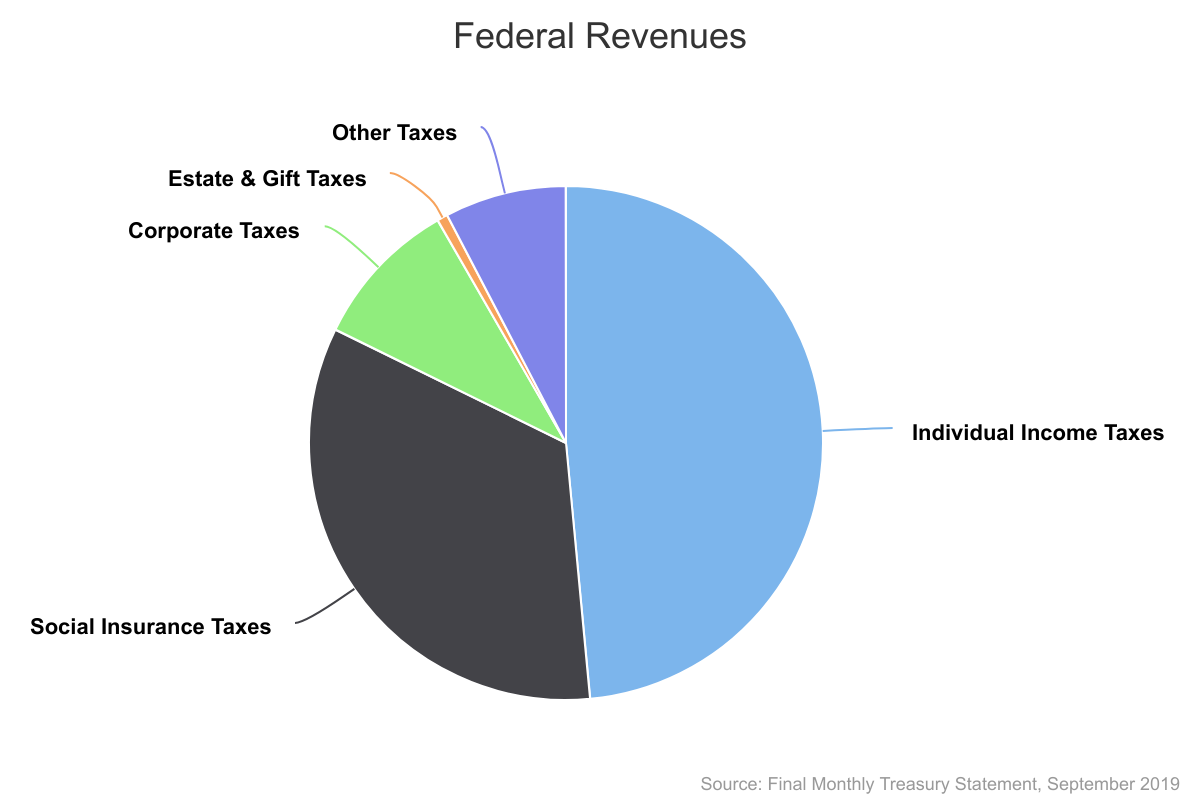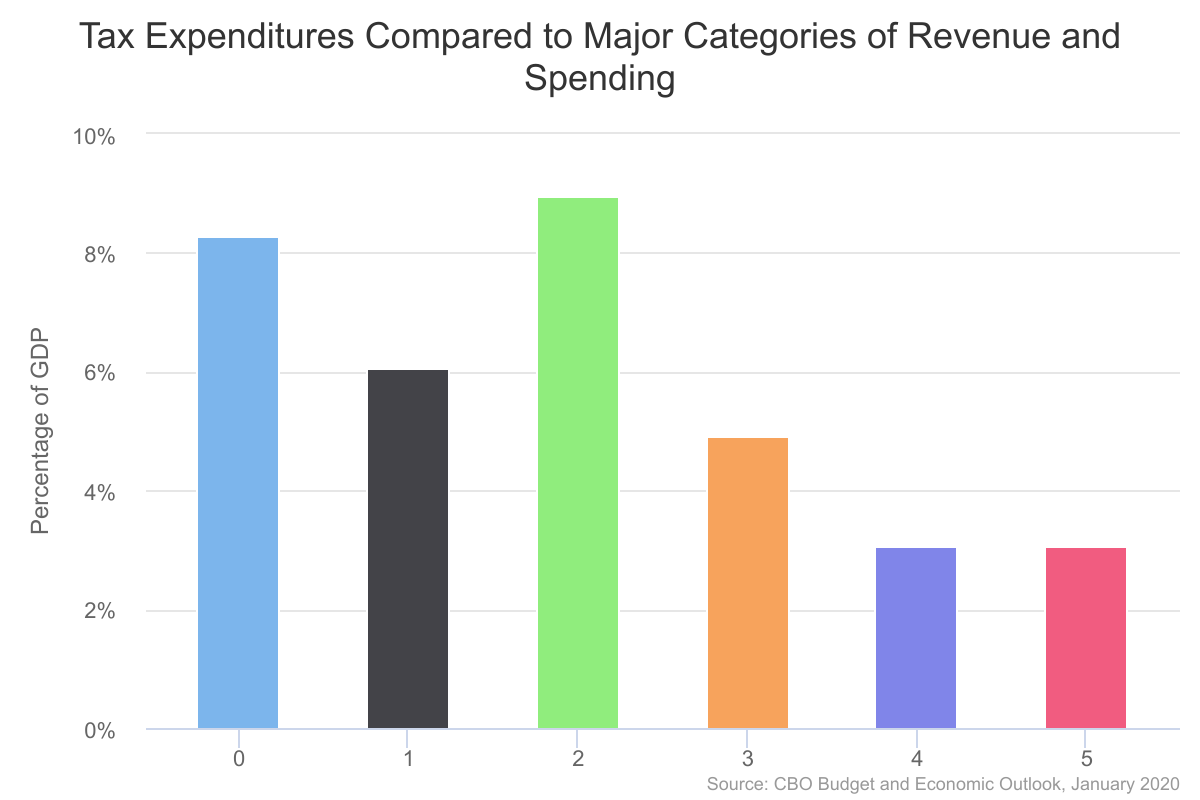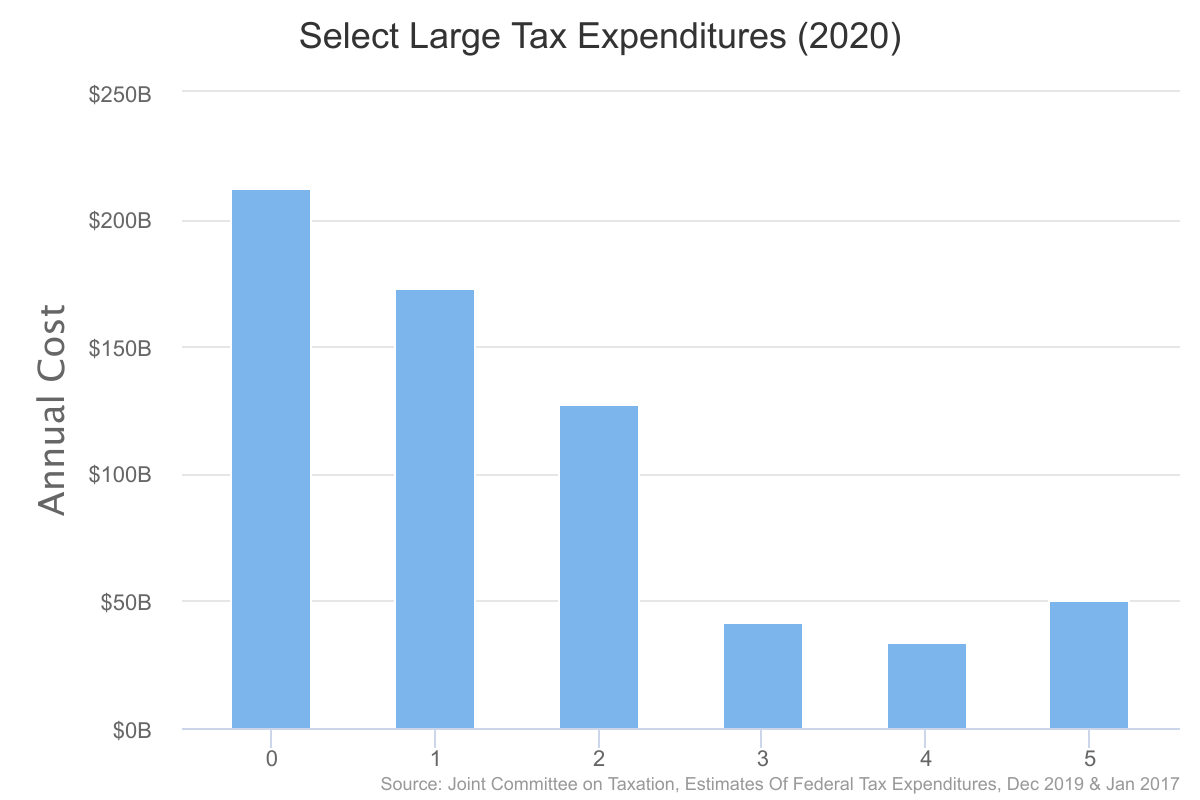The United States tax system is inefficient, overly complex and does not raise enough revenue to keep pace with federal spending. The gap between tax revenue and federal spending is projected to get worse in the coming years due to the effects of our aging population and rising health care costs pushing up the cost of spending programs. Whatever disagreements there may be about the appropriate size of the federal government, the “correct” level of revenue is that which adequately covers the cost of government spending.
How does the government raise revenue?
Revenue collected by the federal government falls into four general categories:
-
Individual income taxes, which are paid by individuals and certain businesses based on their income. Income taxes are progressive, meaning that higher-income individuals are meant to pay more, both in dollars and as a percentage of their total income, than those with lower incomes.
-
Corporate income taxes, which are paid by profitable businesses that don’t file under the individual income tax code.
-
Payroll taxes, which are paid by workers and their employers to fund Social Security and Medicare.
-
Other revenues, which include taxes paid on the estates of deceased individuals, customs duties, and excise taxes such as those on motor fuels, alcohol and tobacco.

Policymakers can increase government revenue by raising tax rates or broadening the base upon which the taxes are collected — so that more income is subject to the income taxes, for example. This can often be done by reducing or eliminating “tax expenditures” that essentially subsidize certain activities and businesses. Another revenue-raising option is to create new taxes, such as instituting a tax on carbon emissions or a national sales tax.
Tax Expenditures
Tax expenditures are special provisions in the tax code that favor some individuals or businesses because they engage in certain behaviors. These tax expenditures are essentially spending through the tax code, although they generally do not receive as much public attention and congressional scrutiny as direct government spending programs do. Policymakers often write these provisions into the tax code to achieve specific policy outcomes such as encouraging home ownership, supporting charitable organizations, financing post-secondary education, assisting a particular industry, or stimulating research and development.
While many of these goals are positive, it is important to understand the enormous impact that tax expenditures have on the federal budget and the U.S. economy. Tax expenditures regularly exceed a trillion dollars annually — more than both Social Security and Medicare. These provisions can heavily influence financial decisions and economic behavior of businesses as well as individuals. Officials need to look carefully at whether these tax code provisions are working as planned and whether their continuation can be justified.

Eliminating tax expenditures is easier said than done, however. Many of the largest tax expenditures are generally popular and have strong support among the industries and groups of people who benefit from them. But many fiscal reform plans have called for reducing or eliminating tax expenditures to lower federal deficits and perhaps reduce overall tax rates. Tax plans that would neither raise or lower overall tax revenue are known as “revenue neutral.”

Benefits of Tax Reform
Effective tax reform — notably by reducing or eliminating tax expenditures — could play an important role in reducing annual deficits and reining in the growth of the federal debt.
This would also help reduce the complexity of the current tax code and address public concerns that Washington is favoring some individuals and businesses over others. Simplification would make the tax laws easier for taxpayers to follow and easier for the government to enforce.
All of this also has the potential to reduce the “tax gap,” which is the difference between taxes that are owed and the revenue that the government actually collects. The Internal Revenue Service estimates that shortfall amounts to hundreds of billions of dollars per year, which is lost revenue that could help lower federal deficits. Increasing the resources available to the IRS for assistance and enforcement could also help reduce the tax gap and federal borrowing.
Many elected officials, however, have focused on tax cuts, arguing in some cases that large, deficit-financed tax cuts will pay for themselves through rapid economic growth. History provides little evidence to support that claim and many economists and non-partisan experts are skeptical about it.
Federal policymakers should pursue far-sighted reforms that will simplify the tax code, make it more efficient, fair and growth-oriented, and better match federal revenues to federal spending.




